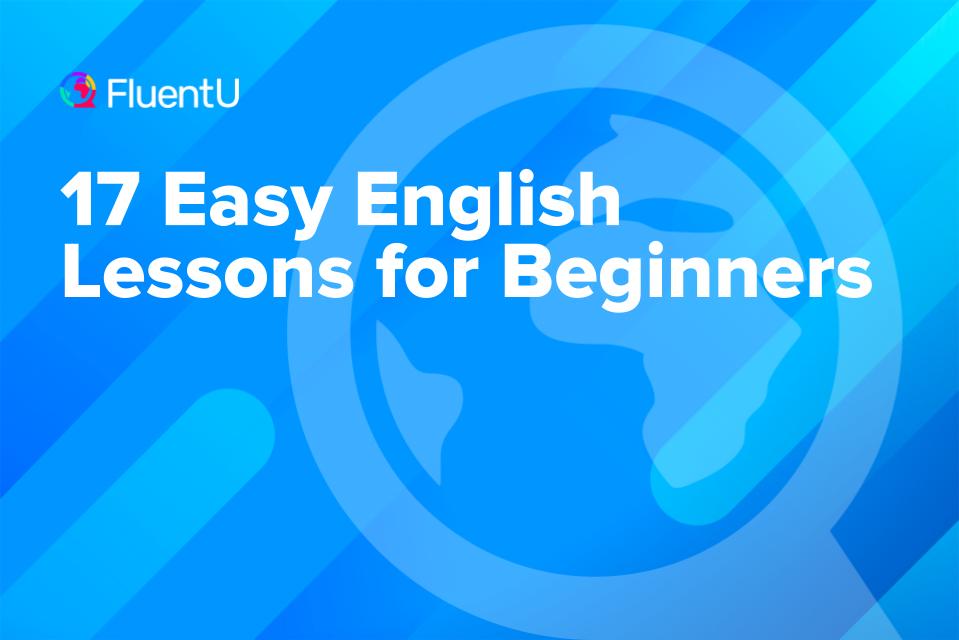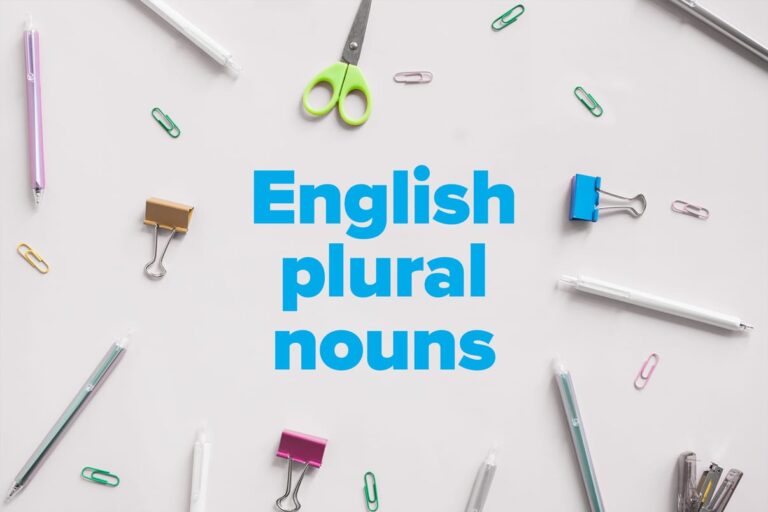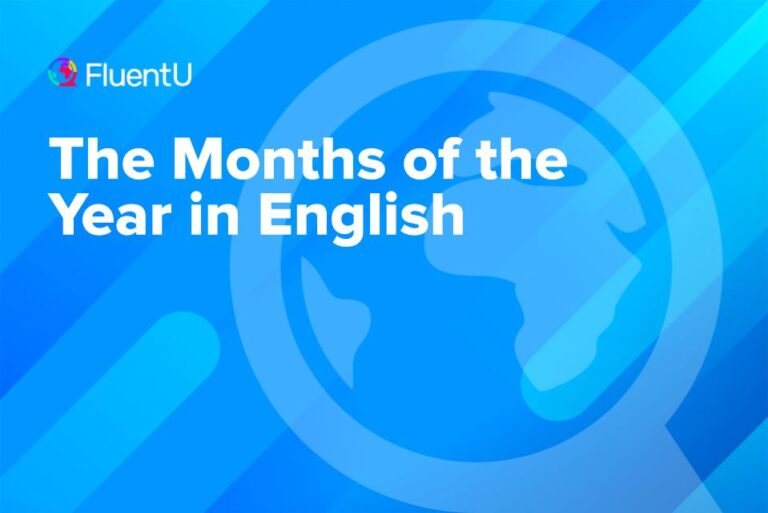17 Easy English Lessons for Beginners

Language learning is a long, difficult journey. But that doesn’t mean there aren’t some tricks and shortcuts you can take along the way to make it a little easier.
Luckily, we’ve searched the whole internet for you and picked the easiest and the best lessons for beginner English learners on a wide range of language skills.
Download: This blog post is available as a convenient and portable PDF that you can take anywhere. Click here to get a copy. (Download)
Basic English Vocabulary Lessons
Learn 1000 New Words a Day
Most people start learning new words without a plan. They simply try to hear new words and memorize them. But after a few hours, you’ve forgotten many of the words.
A strategy is a plan to achieve a long-term goal. And the vocabulary strategies in this lesson will surely help you throughout your language learning journey.
These strategies include:
- Learning words that act as both a noun and verb
- Learning words with multiple meanings
- Learning words that sound the same in your native language
- Learning groups of words with the same root or ending
How to Count
This video gives you the names and the symbols of the first hundred numbers in English. This video is best for regular practice while you start to learn English numbers.
Since it’s very hard for anyone to memorize all the numbers at once, try to learn 10 numbers at a time per day. This will help you review the numbers you learned earlier when you play the video again before learning the next group of numbers.
The Big Numbers Song
If you’re the kind of person who likes to learn through music, then this video is for you. The video uses the rhythm of the music while speaking out the names of the numbers.
It turns learning the numbers into a fun musical experience. Try it out to see if you like this approach.
Vocabulary for the Bathroom
The bathroom is usually the first place we go after we wake up. Knowing the names of the objects that you commonly find in the bathroom can be quite helpful for many learners. This is especially true if you’re planning to visit an English-speaking country.
This lesson does a wonderful job of including everything you can possibly find in a bathroom. The video uses images to both show you the objects and to give you practice at the end.
Classroom Vocabulary
Many English learners either start studying English in classrooms or plan to eventually study in a school or a college. Knowing words for basic things in the classroom can help you relax and be confident while you’re there.
This animated video shows you common objects like a blackboard or a textbook, which you’ll find in all classrooms. The video also shows you the spelling of every word while speaking it aloud. That means you can use this video for basic reading practice along with vocabulary building.
Environment Vocabulary
The environment is the natural world as a whole. We can talk about the environment of the planet or of a specific place. In this lesson, we get to learn the most commonly used English words for this topic.
Since the world is going through a massive environmental crisis, this topic has become quite common in daily conversation. Although the words themselves sound technical and academic, native English speakers use them in informal and causal contexts, too.
For instance, you’ll see many companies use the word sustainability in their ads. The phrase green movement is also very popular now, since some political parties have also adopted this label to describe themselves.
This video lesson will walk you through the environmental vocabulary you need for conversations on such topics.
Basic Math ESL Vocabulary
This one is sort of a bonus. You’ll hear and see some numbers in English, but the main focus is mathematical symbols.
The presenter first names each symbol and then goes on to explain what they do.
The lesson is great for people who’ll eventually go into technical fields. But since this level of math is generally expected of anyone, knowing the names of these basic symbols is also really important for any English speaker.
When to Use “Good” vs. “Well”
This easy English lesson focuses on a very specific vocabulary topic: the difference between “well” and “good.”
This is a topic that often confuses even native English speakers!
When someone asks you how you’re doing, what do you say?
There are two common answers:
“I am good.”
“I am well.”
Since these answers are often used interchangeably, many English learners assume that both words have the same meaning. However, the word “good” is an adjective, which means that it’s used to describe or modify a noun. The word “well” is an adverb and it modifies a verb.
Lessons on Auxiliary and Phrasal Verbs
Be, Do and Have
Auxiliary verbs might sound complex, but their role is actually simple in English. They’re also called “helping verbs,” because they help the main verb in the sentence.
Do, be and have are the three main auxiliary verbs in English. This lesson gives an in-depth summary of how these verbs are used in informal English.
The instructor focuses a lot on the different forms of these verbs. She also talks about when to use contractions and when the verbs are absent in the sentence.
The video is extremely useful for beginners as each section is filled with examples where the important words are highlighted in red.
Make No More Mistakes with Modals: 3 Easy Rules
Modal verbs are a special kind of auxiliary verb that express necessity or possibility. Words like must, should, can, will and may are all modal verbs.
This lesson lists out three main mistakes most learners make while learning these verbs. It also gives examples of both correct and incorrect usage of modal verbs.
After this lesson, test your abilities with this quiz and see if you understood the concepts correctly.
Phrasal Verbs: a New Way to Learn Them
What do these sentences have in common?
“The car broke down in the middle of the road.”
“The teacher asked Tom to turn off his phone.”
“I will drop off your book at your house today.”
All of them use phrasal verbs, a special type of phrase that includes a verb and preposition or adverb.
Phrasal verbs are usually very difficult for English learners. In this video, Dawn Severenuk shares a very helpful tip that can remove the usual confusion.
Instead of trying to memorize every phrasal verb, Dawn suggests that you focus on the prepositions and the adverbs.
This is because the meanings of the adverbs and the prepositions usually remain the same in these phrasal verbs. For instance, the meaning of “up” in almost all phrasal verbs is related to finishing or completing something.
This easy technique will help all learners figure out the meaning of a phrasal verb and save a lot of time for beginners.
If you’re still unsure about your ability, then you can try doing these phrasal verb exercises to test your skills. Alternatively, you can check out this video lesson from our YouTube channel:
Easy English Pronunciation Lessons
The connection between letters and sounds in English always seems mysterious to beginner English learners.
When you’re done with these lessons, it’s a good idea to practice pronunciation the natural way: By hearing native English speakers use the language and repeating it after them. You can do this on a program like FluentU.
FluentU takes authentic videos—like music videos, movie trailers, news and inspiring talks—and turns them into personalized language learning lessons.
You can try FluentU for free for 2 weeks. Check out the website or download the iOS app or Android app.
P.S. Click here to take advantage of our current sale! (Expires at the end of this month.)

To get you started on the way to improved speaking skills, the lessons below will give you the basic knowledge you need about English pronunciation to start saying easy words correctly.
How to Sound Native
Do you remember learning your native language? Probably not.
That’s because as children we pick up language automatically. This video explores how babies learn to speak a language, then lists three ways second language learners can imitate their success.
As the video shows, babies focus more on the stress and the feeling of the words first. This allows them to express and communicate in some way before even learning the proper words.
Babies also observe the movements of the mouth as others speak to them and constantly imitate.
The Secret to Pronouncing Hard Words
Do you often find yourself pronouncing English words the same way you’d pronounce them in your native language? Or do you find it hard to pick up the accent of native speakers even when you know that they sound different?
Most of these problems arise with all language learners. We’re just used to speaking in a certain way from our native language.
In this lesson, you’ll learn about a technique called backchaining that’s used by professional actors and language teachers. With backchaining, you pronounce the last sound of a word first and then keep moving forward.
How to Pronounce Difficult Words in English
This lesson presents seven words that are usually difficult for beginner learners. The instructor pronounces each one of them, focusing on the individual sounds and the stress.
This video gives you a good idea how English spelling relates to common patterns of pronunciation. These patterns occur throughout the language and this video is a good first step towards building up your advanced vocabulary.
How to Pronounce OUGH
There’s no better example of the messiness of English pronunciation than this particular group of letters. The way you speak them changes with almost every word, from “through” to “tough” to “bough” (tree branch).
This video gives a nice summary of how and when the pronunciation changes. It also gives you plenty of examples that you can use in general vocabulary practice.
Rules to Pronounce Silent Letter Words with B, C and D
This is one of the most frustrating aspects of the English language for many learners. You spend hours learning the sounds and combinations of various letters. But then you discover that sometimes a letter is added to a word even though it’s silent when spoken.
This lesson lists out some common rules you can use to figure out when the letters B, C and D are silent.
For example, B is generally silent when it’s at the end of a word, just after the letter M. Some examples are “crumb” or “bomb.”
Silent letters are so common in English because of the language’s history. Learning how to recognize their patterns now will make pronunciation much easier as you continue learning English.
Lessons on Exceptions to English Rules
The English language can take anyone by surprise. For every grammar rule, there’s an exception.
This section is all about helping you be aware of the exceptions.
A/An: Exceptions to the Rule
“Mary offered Tom a banana. But Tom wanted an apple instead.”
I’m sure you’ve come across similar sentences before. The article “a” is used before words that start with consonants, but “an” is used before words that start with vowels… most of the time.
This lesson will show you the exceptions to the rule above, which will help you sound like a more natural English speaker.
Once you go through these lessons, don’t forget to check our other master list of advanced English lessons.
At the end of the day, regular practice is the only path towards fluency.
Download: This blog post is available as a convenient and portable PDF that you can take anywhere. Click here to get a copy. (Download)
And One More Thing...
If you like learning English through movies and online media, you should also check out FluentU. FluentU lets you learn English from popular talk shows, catchy music videos and funny commercials, as you can see here:
The FluentU app and website makes it really easy to watch English videos. There are captions that are interactive. That means you can tap on any word to see an image, definition, and useful examples.
For example, when you tap on the word "searching," you see this:
Learn all the vocabulary in any video with quizzes. Swipe left or right to see more examples for the word you’re learning.

FluentU helps you learn fast with useful questions and multiple examples. Learn more.
The best part? FluentU remembers the vocabulary that you’re learning. It gives you extra practice with difficult words—and reminds you when it’s time to review what you’ve learned. You have a truly personalized experience.
Start using the FluentU website on your computer or tablet or, better yet, download the FluentU app from the iTunes or Google Play store. Click here to take advantage of our current sale! (Expires at the end of this month.)










